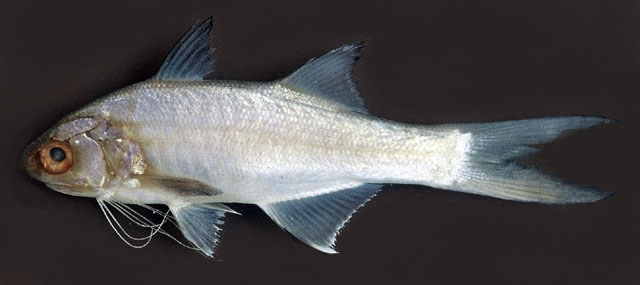| Polynemidae (Threadfins) |
| 33 cm TL (male/unsexed) |
|
demersal; brackish; marine; depth range 0 - 55 m |
| Western Atlantic: New Jersey, USA to Salvador, Brazil. Reported to range to Uruguay (Ref. 9626). Not occurring in the northern and western Gulf of Mexico. |
|
Dorsal spines (total): 8-9; Dorsal soft rays (total): 11-11; Anal spines: 3-3; Anal soft rays: 12-14 |
| Found on sandy and muddy bottoms of coastal waters, estuaries and mangroves, and occasionally in the surf (Ref. 57343). Young aggregate near river mouths (Ref. 57343). Common around islands (Ref. 9710). Nocturnal feeder, taking crustaceans, chaetognaths, plant material, and polychaetes (Ref. 57343). May have a prolonged spawning season (Ref. 57343). |
|
Least Concern (LC); Date assessed: 29 January 2013 Ref. (130435)
|
| harmless |
Source and more info: www.fishbase.org. For personal, classroom, and other internal use only. Not for publication.

